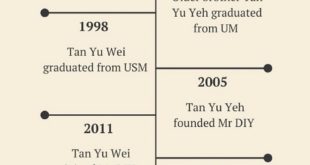General Election is upon us now and it’s time to get educated on the different political parties that will be contesting in the upcoming election.
Who are they? What do they stand for? What is their track record?
In this series, we will cover everything you need to know about the party so you can have a better understanding of what they’re about before you cast your votes.
Following our breakdown of the People’s Action Party (PAP), Worker’s Party (WP) and Singapore Democratic Party (SDP), we’ll be looking at the Singapore Democratic Alliance (SDA).
A Quick History Of SDA
The SDA was formed in 2001 and was the first coalition in post-independence Singapore. Reportedly, the SDA was created to achieve a two-party political system.
At the time, SDA comprised five opposition parties, including the Singapore People’s Party (SPP), Singapore Justice Party (SJP), and Singapore Malay National Organization (PKMS).
Chiam See Tong, the Secretary-General of SPP, served as SDA’s leader. Chiam was a highly prolific opposition leader with over 40 years of experience. He was the second opposition member ever elected to parliament.
SDA began to fracture in 2007 when NSP departed to pursue its own goals.
In 2010, SDA’s alliance with the Reform Party (RP) fell through after a document containing the conditions for membership was leaked.
Among those who objected to RP’s membership was SPP’s Desmond Lim. Lim clashed with Chiam, and withdrew from SPP to join SJP as its chairman.

In 2011, the SPP withdrew from the SDA and Desmond Lim succeeded Chiam as Secretary-General of the SDA.
Prior to GE 2020, talks of new alliance with four opposition parties fell through. Currently, only the SJP and PKMS remain in SDA. However, Sec-Gen Lim has announced that he plans to step down after GE 2020.
What Do They Stand For?
SDA’s mission is “Service Before The Self”. The party champions charitable, welfare-based policies.
Under Lim, the Dedicated Local’s Caring Community was created to distribute over 5 million assistance packages to needy persons in Asia.

The SDA’s manifesto for GE 2020 aims to “provide a better life for all Singaporeans, not just a privileged few.”
This includes fixing the “broken” CPF system, tightening immigration, implementing a progressive GST system, and reducing inequality.
What Do S’poreans Think About SDA?
SDA’s welfare-based policies appeal to the lower-income subsection of Singaporeans. Ethnic minorities are also represented by parties within SDA.
Policies like the GST and CPF rehauls proposed by the SDA are aimed at reducing the high costs of living for Singaporeans. Those who live below median income will benefit most from redistributive campaigns.
However, the SDA flies under the public’s radar. A report in 2013 saw residents of Potong Pasir express admiration for Lim’s sincerity, but doubt over the SDA’s ability to deliver on its promises.
Past General Election Results
The SDA had a strong start. Its first election in GE 2011 captured 12% of the popular vote and 13% in GE 2016.
Under Chiam’s leadership, the SDA gained a seat in parliament through the Potong Pasir Single-Member Constituency (SMC).
However, the SDA lost its seat in Parliament and saw a drop in its share of the popular vote when the SPP left the coalition.
The SDA’s share dropped to 2.78% in GE 2011 and to 2.06% in GE 2015.
Where Will They Be Contesting?
In GE 2020, the Singapore Democratic Alliance will be contesting in one electoral division: the Pasir-Ris-Punggol GRC, in a three-way fight with the PAP and People’s Voice Party (the only one so far).
Helmed by a five-member group, the SDA will field candidates like Desmond Lim and Harminder Pal Singh.
Disclaimer: Vulcan Post does not support or endorse any political parties.
Check out our GE 2020 microsite for the latest election-related news, find out which constituency you belong to, and who’s running where on the election battleground here.
Featured Image Credit: The Online Citizen



